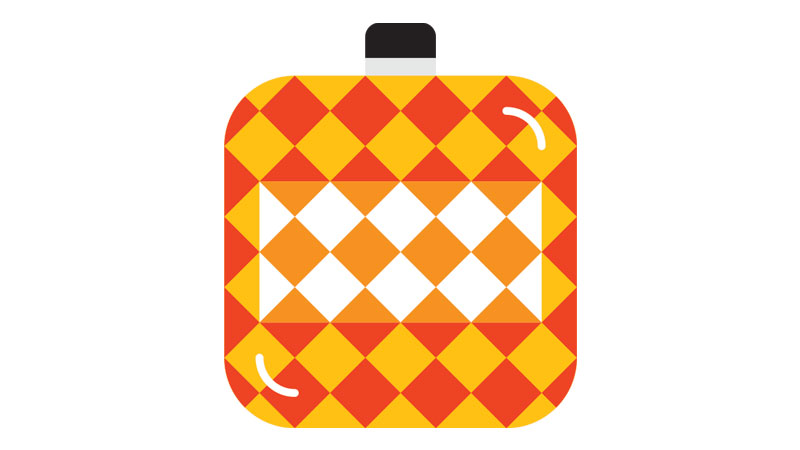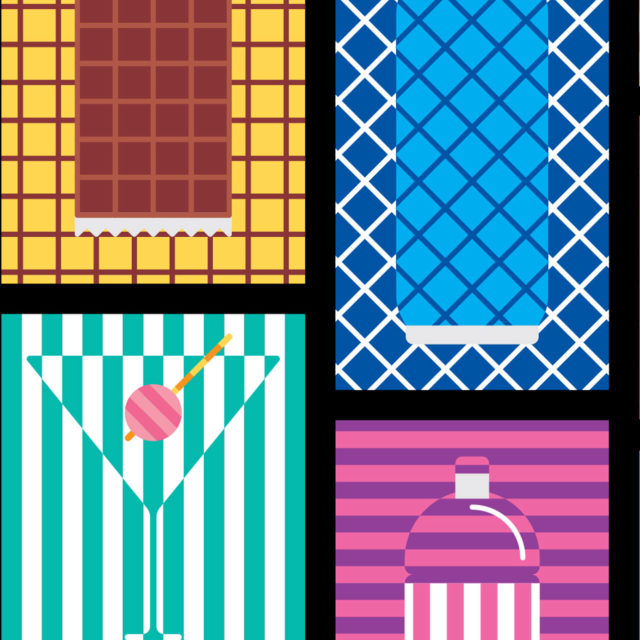“I’ve developed a love-hate relationship with the minibar based on how expensive yet convenient it can be,” says Dave Heinzinger, vice president of NYC’s Haymaker Group.
He’s not alone. According to data collected by PKF Hospitality Research, in-room spending on food and drinks plummeted 28 percent from 2007 to 2012. Like many time-honored institutions, minibars are having a 21st-century identity crisis. Once a symbol of globe-trotting adulthood, they’ve started to seem bulky and old-fashioned, hulking IBM desktops in a room of iPhones.
How should we feel about them, then? On the one hand, there’s singular comfort in knowing a bottle of Dewar’s and bag of M&Ms lie within arm’s reach. Then again, we don’t really need either because we have unfettered access to delivery apps and cool lobby bars.
Now, in hopes of regaining our unconditional allegiance, hotel minibars are entering their third act. Smart hoteliers are reinvesting in them, improving tech and stocking better, more thoughtful snacks and drinks. Suddenly, against all odds, minibars are poised to rebound. Market research firm Hexa recently predicted hotel minibars will generate $1.49 billion by 2024.
Minibars are getting their booze back — and we’re still buying.
*
When the Hilton Hong Kong debuted the industry’s first alcoholic minibars, in 1974, they were enormously successful. In-room beverage sales increased 500 percent, according to a 2013 article in The Atlantic, and company profits climbed approximately 5 percent.
Boozy minibars were soon at every Hilton, and then at most chains worldwide. By the 1990s, any hotel worth its salted peanuts outfitted rooms with a chest of sweet and savory snacks plus liquor, beer, and wine.
Convenience was paramount, competition was scarce, and markups were considerable. A single bottle of water might run you $5 or much, much more.
Prices were also wildly inconsistent by destination and hotel brand. In 2013, Lastminute.com, a travel retailer in the U.K., surveyed 500 hotel minibars worldwide. Guests thirsty for a small bottle of sparkling wine might pay anywhere from €3.60 in Budapest (equivalent to approximately $5 in 2013), to €128 in Kuala Lumpur (about $177).
It became too much for the market to bear. We stopped indulging. Sales dropped and, in a 2014 TripAdvisor survey of travelers’ favorite hotel amenities, minibars came in dead last.
“I think consumers just started getting really annoyed with feeling like they’re getting nickel and dimed for minibars,” says Deanna Ting, senior associate editor, Skift and Skift Table.
Our once-shiny new toy was now disappointing all parties. Labor costs and faulty tech made minibars expensive liabilities for hotels. In a 2014 article in the Milwaukee Journal Sentinel, Milwaukee’s Ambassador Hotel estimated that 90 percent of its automated minibar charges were errors. That’s a lot of indignant guests at checkout.
Many hotel brands started dialing minibars back, either removing them from rooms or leaving them empty for guests to stock or ignore at will. “We don’t want to sell mini-macadamia nuts for $8.50. It’s not what people want,” Simon Dell, then the vice president of operations for ONYX Hospitality Group, told CNN in 2014.
Besides, at this point, guests had other options. Seamless and GrubHub merged in 2013, improving and diversifying in-room delivery choices. Postmates launched in 2011, Drizly in 2012, and DoorDash in 2013.
“You can get everything on demand,” Skift’s Ting says. “If I really want something, I can just Uber Eats it, or use DoorDash.” Even with tax and tip, delivery costs are reliably less than if you order room service or open something in the room — provided there even is a minibar to raid.
And if you do muster the energy to head downstairs, there might be a really cool scene waiting. Ting has noticed more hotels investing in public spaces because modern travelers want great bars and restaurants more than armoires or multiple luggage racks.
“You see that with the shrinkage of the room sizes, too,” Ting says. Hotels figure, “‘You don’t need a big room, you’re not going to be in there very long!’” he says.
It’s sound logic. Since guests are dropping less cash in their rooms, hotels are enticing them to spend elsewhere. A 2018 study by consulting firm Technomic found that, as minibar and room service profits have declined, the total amount that hotel guests spent on food and beverage grew 5.5 percent, year over year, since 2011.
When an Ace Hotel opened in NYC in 2009, it had the city’s first Stumptown coffee shop and a perpetually thronged restaurant. I worked nearby, and, one day, in 2011, I suggested a friend visiting from Philadelphia meet me in the lobby for a drink. It was packed with hoodie-wearing CEOs illuminated by MacBooks and glamorous-looking people sipping cocktails at 3:00 p.m. on a weekday.
“It’s very, um, 21st century in here,” my friend commented. He wasn’t staying in the hotel.

Despite these setbacks, minibars are currently ready to reboot. Hotels, for their part, certainly haven’t given up on capturing your in-room dollar.
In October 2018, Bloomberg’s Kerry Medina reported on the birth of the “maxi-bar.” Instead of a middling mini-fridge, top-tier hotel rooms have chic bar carts with premium spirits, garnishes, glassware, and recipe books. Trolleys roam hallways dispensing Campari sodas, and cocktail butlers can be summoned to make you drinks in your suite.
Technology is improving, too. Silicon Valley hotels were among the first to install Plum Wine Dispensers. These devices resemble coffee machines and draft temperature-preserved wines by the glass, so guests don’t have to open and pay for an entire bottle.
“The overarching theme is the industry is trying to be more thoughtful about minibars,” Ting says. For a generation weaned on customization and localization, minibars stocked with macro beers, industrially produced wine, and CVS snacks can seem as outdated as the big-box chain hotels from whence they came. Some hotels have started swapping in items that reflect their destinations, such as in-room drafts of local beer at the W Costa Rica, and Korean-American snacks at The Line Hotel in L.A.’s Koreatown.
Every innovation inspires blowback. We might get to a point where we walk into hotel rooms and groan at the sight of craft beers and artisanal crackers seasoned with herbs from the hotel’s rooftop potager. When that day comes, rest assured, hotels will try to find something else to tempt you.
What we want when we’re sleeping in a strange place is comfort and connection, and so the appeal of minibars is eternal. It transcends nips of Dewar’s and made-to-order Campari sodas. At their best, minibars provide snack-sized adventures coupled with unapologetic self-care. They eagerly cater to our cravings with hefty taxes but zero judgment. Sometimes, salvation gets itemized on your bill at checkout.
